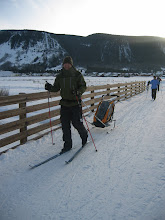The instructional strategies described in the resources I explored this week correlate with the principles of the cognitive learning theory. The cognitive learning theory is all about how people receive, store, and remember information (Laureate Education, Inc., 2008). Several of this week's strategies would really help with this process. Below are a few of the strategies discussed in this week's learning that I can think of that correlate with the principles of the cognitive learning theory.
Cues, Questions, and Advanced Organizers:
Cues, questions, and advanced organizers really help students begin the information storing process. After viewing this week's material, I noticed several of the ideas mentioned have to do with opening the door to learning (Pitler, Hubbell, Kuhn, & Malenoski, 2007). Using essential questions on inspiration helps kids begin the storage process (Pitler, Hubbell, Kuhn, & Malenoski, 2007). Students use the essential questions kind of like a warm-up. This question helps kids get their minds in the right place for learning. Cues work to help students activate prior knowledge (Pitler, Hubbell, Kuhn, & Malenoski, 2007). The advanced organizers discussed in this chapter help students get visuals of text information (Laureate Education, Inc., 2008). Webs created by inspiration would allow students to make connections to other meaningful concepts (Pitler, Hubbell, Kuhn, & Malenoski, 2007).
Summarizing and Multimedia:
The chapter on summarizing and multimedia really discusses tools that can be used to help students turn short term ideas into long term knowledge. While reading this section, I really got the impression that using tools like Discovery Education and Google Video would give students images to go a long with the key concepts (Laureate Education, Inc., 2008). These visuals would then help students make a more concrete connection.
Concept Mapping Tools:
I really enjoyed using the concept mapping tools this week. I used bubbl.us. I think it is amazing how kids can actually make mental and physical connections using computer tools. I know using the concept of the web is an old idea, but using this concept with a computer tool will really help improve excitement for a particular topic. If the students are allowed to be a part of the creation of an idea, that idea will stick (Pitler, Hubbell, Kuhn, & Malenoski, 2007). The memory of creating these maps through technology tools will help students store the information better.
References
Laureate Education, Inc. (Producer). (2008). Program five. Cognitive Learning Theory [Motion picture]. Bridging learning theory, instruction and technology. Baltimore: Author.
Pitler, H., Hubbell, E., Kuhn, M., & Malenoski, K. (2007). Using technology with classroominstruction that works. Alexandria, VA: ASCD.
Subscribe to:
Post Comments (Atom)

Chris-
ReplyDeleteYou are so right about using technology as part of the learning process. Concept maps help our students connect to the concepts we are emphasizing, but to be in control and to layout their own ideas is empowering. I, too, am looking forward to intergrating this tool into my regular instruction.
Margaret Theonnes